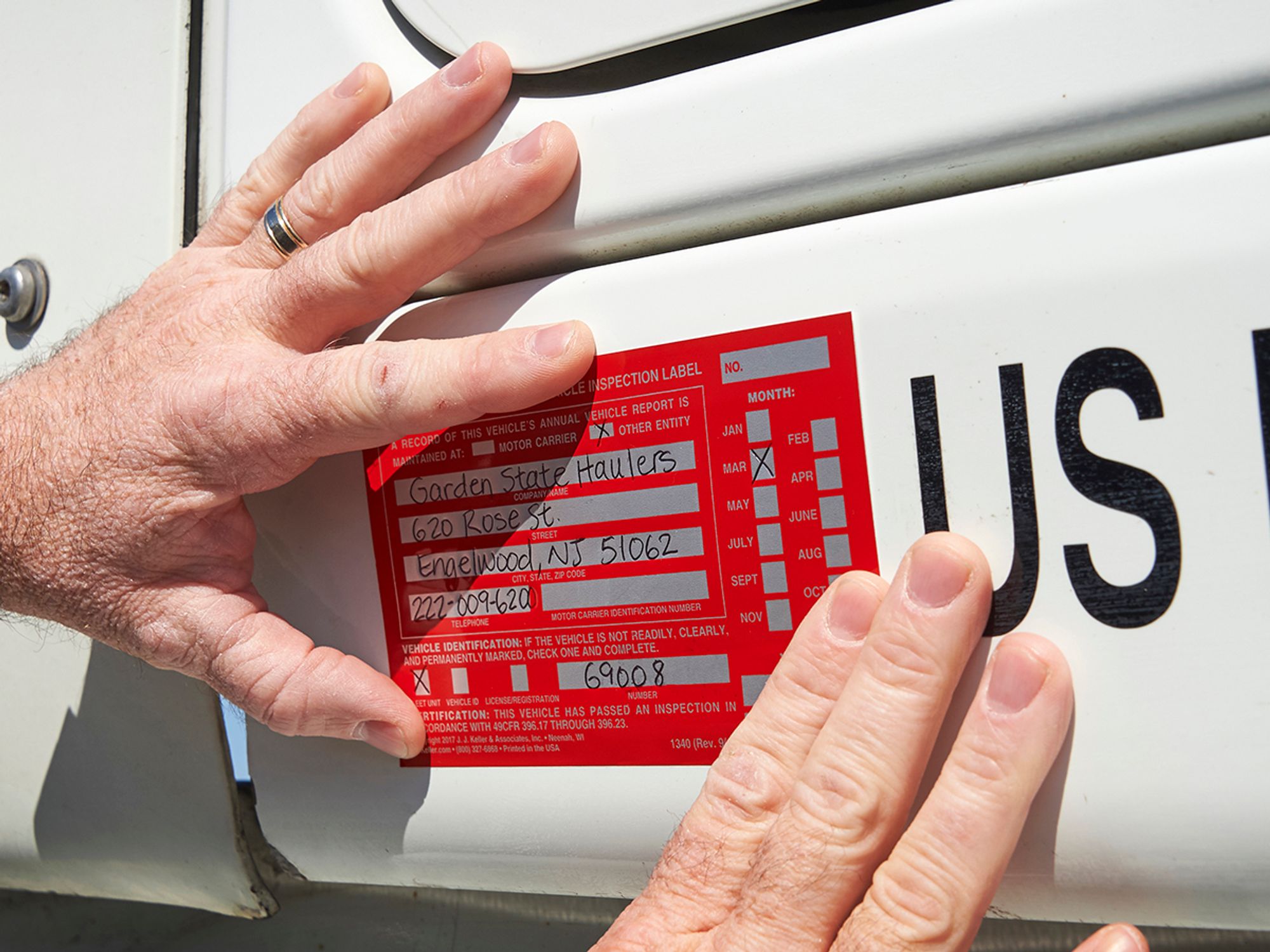Periodic, or annual inspections

- An annual inspection requirement applies to all CMVs owned by a carrier, but also requires a carrier to ensure that those vehicles controlled by and operated by the carrier have been inspected annually.
- Annual or periodic inspections by the carrier must be performed a qualified inspector and, if inspections are performed by an outside shop, the carrier must make sure the inspections are completed and done according to the regulations.
- The qualified inspector performing annual inspections must prepare a report for each inspection which identifies the name of the individual performing the inspection, the motor carrier operating the vehicle, the date of the inspection, the vehicle inspected, and the components inspected.
The Federal Motor Carrier Safety Regulations (FMCSRs) require commercial motor vehicles (CMVs) be inspected at least once every 12 months. (396.17, 396.19). The vehicle must meet the requirements established in Appendix A to the regulations to pass the inspection. If a component does not meet the standards, it must be repaired before the vehicle can pass the inspection and resume operation. This is known as the “periodic” or “annual” vehicle inspection requirement.
This requirement also applies to intermodal equipment providers. Intermodal freighting consists of the transport of products and raw materials in a closed container by a variety of vehicles, such as ships, trains, and semi-trailer trucks. Intermodal equipment providers are required to see to it that any intermodal equipment provided to motor carriers (primarily intermodal chassis) have been annually inspected.
The regulations require that all CMVs controlled by a carrier and operated in interstate commerce pass an inspection at least annually. This means that carriers are not only responsible for the annual inspection of vehicles they own but must ensure that vehicles provided by others, such as intermodal equipment providers and leasing companies, have been annually inspected.
Periodic inspections must be performed by a qualified inspector who meets the requirements found in 396.19.
Outside inspections
If a carrier has an outside shop perform some or all of its periodic inspections, it must make sure that the shop is actually doing the inspections, and that the inspections are being done in accordance with the regulations. The carrier is still responsible for the inspection, even if it is done by another party.
There are cases (both criminal and civil) involving maintenance managers being held responsible for poor periodic inspections done by outside shops. The civil cases have involved maintenance managers not verifying that the outside shop was doing the periodic inspection correctly. The criminal cases involved maintenance managers knowing that the outside shops were not doing the inspections correctly. In one criminal case that led to jail time, the maintenance manager knew the shop was not even conducting the inspections, even though the carrier was receiving the required reports and decals (the vehicles were never in the outside shop that issued the reports and decals).
Documentation of periodic inspections
Section 396.21 provides the documentation rules for periodic inspections. The qualified inspector performing annual inspections must prepare a report for each inspection which identifies:
- The name of the individual performing the inspection
- The motor carrier operating the vehicle
- The date of the inspection
- The vehicle inspected
- The components inspected
All periodic inspection reports must be retained where the vehicles are housed or maintained for 14 months.
Proof on the vehicle
A copy of the inspection report, or a decal containing minimal information about the inspection, must be on the inspected vehicles. If a decal is used,it must include:
- The inspection date,
- The name and address of the location where the inspection report is being kept,
- Information identifying the vehicle if the vehicle is not clearly marked, and
- A certification that the vehicle passed an inspection in accordance with 396.17.
The regulations do not specify where the inspection sticker has to be placed on the vehicle. However, the driver is responsible for making sure an inspector can access the sticker upon request, so the driver has to know where the sticker is located and has to make sure that it remains legible and current.
New vehicles must also carry proof of annual inspection, but a vehicle dealer who complies with the inspection requirements may provide the documentation (sticker and/or inspection report) for the initial inspection.
